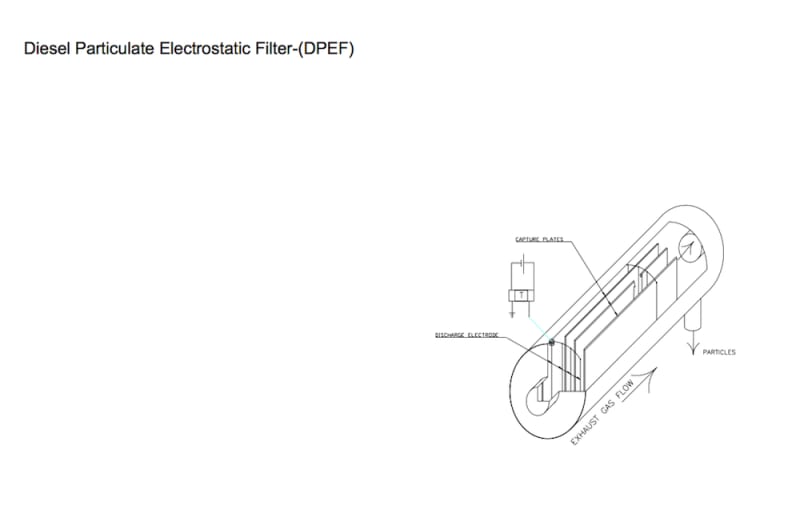Purpose:
The primary target is to minimize the pollutant emissions of diesel engines vehicles, to achieve TIER IV-V and EURO IV-V current regulations. An after-treatment exhaust gas electrostatic device, for CI diesel engines, traps the combustion process particles present in the aerosols diesel soot, whit a system operation based on the same physic principle and technology employed at the Ashes Electrostatic Precipitator-Filter, (Electro- filters) worldwide installed at Power Station plants with Coal fired Steam Generation.
The ash particles are not combustible. Hence, they progressively clog the filter, decreases exhaust flow and thus increase the back pressure, its impacted the engine performance and, in turn, increases fuel consumption, increases pollutant emissions or shortens durability.
Additional secondary benefits, consist that this electrostatic filter type system device, minimize the exhaust back-pressure to an engine, lower than introduced by typical wall-flow Diesel Particulate Filter (DPF).-
The filter elements of typical DPF must therefore be periodically replaced or cleaned, trap operation is characterized through long periods of soot collection alternating with short recycling sequences.
This exhaust-gas after-treatment system, may be able to operate on fully automatic mode; during the
life cycle of the trap (collection, clean and disposal); i.e. neither the driver nor the workshop need intervene.-
The cleaning interval mainly depends on the fuel, lubricants, operations, filter properties and filter design.
Description:
Metallic cylindrical vessel with inner tubular arrangement formed by parallel longitudinal channels of vertical plates acts as capture electrodes (+), and an isolation mounting wires between them acts as discharge or crown electrode (-).
CC High Voltage electric power supply.
Shake mechanism to clean and disposal filter cycle.
Designed to fit with the entire exhaust gas pipeline, mounted upstream the SCR, (Selective Catalytic Reduction); in diesel engines vehicles that are typically limited from utilizing under chassis after treatment designs due to the concern with ground clearance tail pipe.-
External vessels to disposal collected particles.
Back pressure Sensor.
For nonstop applications two DPEF units may be arranged (Run & Stand by) to recycling operation.-
Design can attempt many other practical criteria, e.g. trap size, weight, thermal inertia, muffling, and surface temperature.
Like this entry?
-
About the Entrant
- Name:Jorge Pagano
- Type of entry:individual
- Patent status:none

